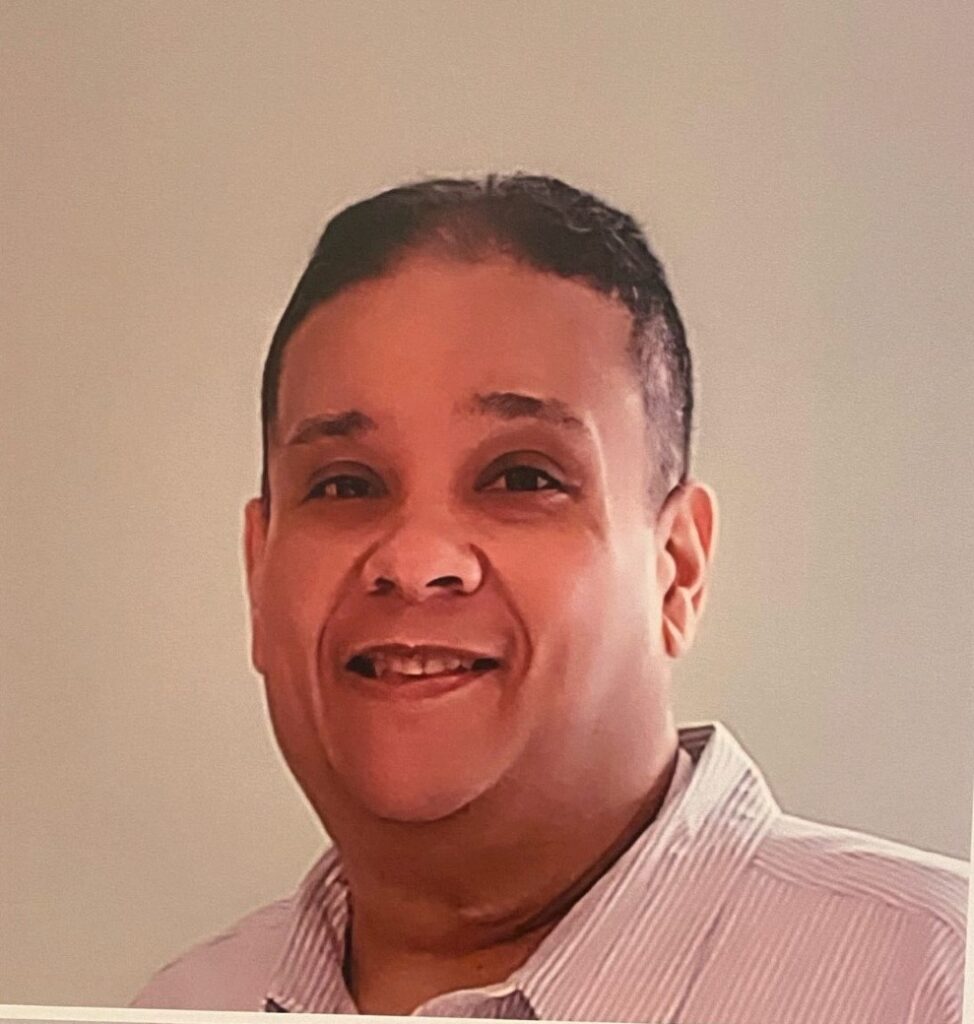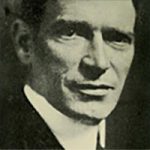Remembering Eddie with the Ready Smile

Feb. 11th would have been Eduardo “Eddie” Granado’s 57th birthday but he died in his sleep a week before Christmas from an aggressive form of rectal cancer he contracted after his occupational exposure to the highly toxic air that permeated in and around lower Manhattan for the months after the 9/11 attack.
He had been expected at a family holiday gathering and it wasn’t like him to be out of touch.
The gregarious Dad of two sons wasn’t a firefighter or a cop or a member of FDNY EMS. He was the overnight master control engineer for WNYC that was at the time headquarters at the New York City Municipal Building at One Centre that’s now named for Mayor David Dinkins. Eddie loved his job, his family, the people he worked with, as well as the Mets and Rangers.
He was one of those behind the scenes essential workers that made the City of New York continue to function through the night into morning, turning the wheel of that vast lazy Susan on which a sleeping Big Apple could rest upon.
Twenty three years after the attack, more people have died from their exposure to the toxic air present in lower Manhattan during the several months of the clean-up than the close to 2,700 who died on the day of the attack. At the time, the EPA said the air was “safe to breathe.”
As a consequence of the 9/11attack on the World Trade Center, WNYC lost its FM transmitter when the WTC’s North Tower collapsed. As recounted in a poignant Library of Congress post by WNYC’s Andy Lanset the station was “only six blocks from the World Trade Center, the western views from our windows featured the Twin Towers and the iconic Woolworth building.”
Lanset recalls how on-air reporters, engineering personnel and managers all worked together in the days and weeks after improvising work arounds to keep the region and the world informed after the twin towers collapsed just blocks away.
“For those who were in the New York area that day, the weather could not have been more pleasant on September 11, 2001,” recounts Lanset. “The sky was clear, the humidity comfortable, and the temperature slightly crisp. So, what began to unfold at 8:46 am that morning was, at first, a surreal disaster movie to those of us watching and listening at a distance. But it was all too real to those close at hand in lower Manhattan.”
According to Lanset “the WNYC studios in the Municipal Building were fully evacuated by late afternoon [of Sept. 11] . Essential staff and engineering went uptown to the NPR news bureau to set up a new studio.”
Neil Golub, now with Sirius Radio, was WNYC’s Operations Manager at the time.
“Phone lines were down—trains were not running—people were not sure if we were coming back to the office,” Golub recalled. “In a couple of days some of us, including Eddie, got together and went back up into WNYC [in the Municipal Building] and grabbed some equipment, logs for the commercials, some microphones and made our way up to mid-town where the NPR bureau was and set up shop there for a while. “
“And Eddie was one of the first people to go into the studios and start running the overnight programs,” Golub said. “I remember him running both the AM and FM for a while until we were able to get staff up and ready. He was one of the people to get us back to what you would have considered normalcy for a broadcast day… The only thing I remember Eddie complaining about was if the Mets or Rangers lost.”
In the aftermath of the attack, Golub explained that while the World Trade Center’s acrid toxic smell was “pervasive” the overriding anxiety centered on whether the Empire State Building or the Brooklyn Bridge would be attacked next. “To be honest, we never thought of ourselves of being at risk,” he said. “We were all about getting the station back on the air and making sure all of these stories got told by making radio and that’s what we did.”
On Oct. 17, 2001 the New York Times reported WNYC was “moving more of its operations back into the Municipal Building as city workers also return. In the offices, maintenance crews have vacuumed the film of dust left by the twin towers’ collapse.” The fires at Ground Zero would continue to burn for months.
As it turned out, in retrospect lower Manhattan south of Houston, portions of the western Brooklyn as well as Staten Island’s Fresh Kills Landfill would be all considered a hot zone for several more months until the World Trade Center clean-up was declared over at the end of May 2002.
Three days after the 9/11attack, former New Jersey Governor Christie Todd Whitman, then head of the U.S. Environmental Protection Agency, told reporters that “the good news continues to be that air samples we have taken have all been at levels that cause us no concern.”
Two years after 9/11, a review by the EPA Inspector General concluded EPA “did not have sufficient data and analyses to make such a blanket statement,” as “air monitoring data was lacking for several pollutants of concern.”
Moreover, the OIG learned that it was President George W. Bush’s White House Council on Environmental Quality (CEQ) that heavily edited the EPA press releases “to add reassuring statements and delete cautionary ones.”
Even though samples taken indicated asbestos levels in lower Manhattan were between double and triple the EPA’s limit, the CEQ downplayed the readings as just “slightly above” the limit, the EPA IG found.
Concerns about maintaining New York City and Wall Street’s standing as the finance capital of the world open for business trumped more pedestrian concerns like public and worker health.
The EPA’s IG asserted the “EPA could have taken a more proactive approach regarding indoor air cleanup. After the City was criticized for its response, EPA began to assume a lead role in February 2002. Prior to initiation of the EPA-led cleanup, many WTC area residents had returned to their homes, and a study indicated most of them had not followed recommended cleaning practices. The full extent of public exposure to indoor contaminants resulting from the WTC collapse is unknown.”
In general the news media, with the notable exception of Daily News columnist Juan Gonzalez, towed the EPA line.
Dr. Lisa Golding Granado is a New Jersey based internist who married Eddie in 1994 and had two boys with him, Eddie Tyler, and Dylan. The couple divorced in 2010 but remained very close. Sept. 11th found the couple living on the Jersey City waterfront in the Portofino complex in Newport. “It was right on the river and it was perfect for the Manhattanite who thinks Jersey City is the suburbs,”Granado said. “The bay window of our apartment framed the World Trade Center because we lived right across the river from downtown.”
Eddie Tyler was just a little over a year-old when the attack on the WTC upended the world. Granado vividly remembers that her husband’s hair and clothes would wreak of that acrid WTC smoke smell when he would return home from work.
“Of course you have a one year old and Eddie comes home and they both want to greet each other and play and do what’s necessary and I remember saying ‘don’t pick that baby up until you take a shower and wash your hair first and then go play with the baby and he would of course be compliant,” Granado said. “But at the time we were told everything was safe, that it was ok to go back. And I remember Eddie telling me he was working in a building and wasn’t working at the clean-up site….Everyone was worried about another plane or another bomb not that the environment was burning and toxifying us all.”
According to Granado, even after Eddie was diagnosed with the rectal cancer the 9/11WTC connection had not clicked.
“I think the trigger was being in the industry and talking to people and his oncologist telling him he had this very aggressive cancer but with absolutely no family history of that sort of cancer—that’s when the light bulb went off instantly—‘wait I was in an environment that wasn’t pristine for a point in my life’ and that’s what prompted him to apply for the Victims Compensation Fund.”
Eddie was an avid collector of sports memorabilia, an instinct that held him in good stead when it came time to document his time on the job, something that’s essential for signing up for the 9/11 WTC Health Program and the Victim’s Compensation Fund. “Thankfully, he saved time slips, time sheets, pay stubs and his ID cards that all showed he worked at 1 Centre,” Granado said.
“The journalists, newscasters and people like Eddie were most definitely responders because they were breathing the same dust just to get the story out to a nation that was scared to death whether or not there would be an additional attack-if more buildings would fall—if husbands and wives were alive,” said Michael Barasch, leading 9/11 WTC attorney, whose firm represented the Granado family. “They were heroes in harm’s way getting the word back and for Eddie particularly going back into WNYC with his co-workers without any respiratory protection—taking what they needed uptown—it was wonderful but unfortunately he paid the final price which is his life.”
Last year, Gov. Hochul signed the 9/11 Notice Act which as of June will require businesses and institutions that had employees that could have suffered an exposure in the toxic zone that extends south of Houston, portions of western Brooklyn, and the Fresh Kills Landfill in Staten Island, of their potential eligibility for the Victim Compensation Fund and World Trade Center Health Program.
The State’s Economic Development agency and Department of Labor are responsible for implementing the mandate and the supporting regulations.
Both the 9/11 WTC Health Program and the VCF are open to both first responders and survivors, who lived, worked, attended school, in the exposure zone. Those who do secure a first responder classification are entitled to life time annual health screening whereas survivors have to exhibit symptoms to qualify for the WTC Health Program.
To be eligible you must have been caught in the immediate 9/11 WTC dust cloud for at least one hour or four hours over the first four days or 24 hours all together for the month of September in 2001 or 80 hours between 9/11 and May 30, 2002.
In 2022, the New York Times reported that the World Trade Center Health Program had confirmed 4,610 program participants had died since the attack “although the program does not collect information on cause of death” adding that “some health officials believe many died from Sept. 11-related illnesses — and that the toll is in fact higher, given the likelihood that many people have died who were not enrolled in the program and did not know their illness was Sept. 11-related.”
As of Sept. 11 of last year 86,000 first responders, close to 95 percent of the cohort, were enrolled in the WTC Health Program. Over 39,000 civilian “survivors” were enrolled, a small fraction of the people that were present south of Houston Street or in the western portion of Brooklyn that defines the FEMA exposure zone.









Leave a Reply